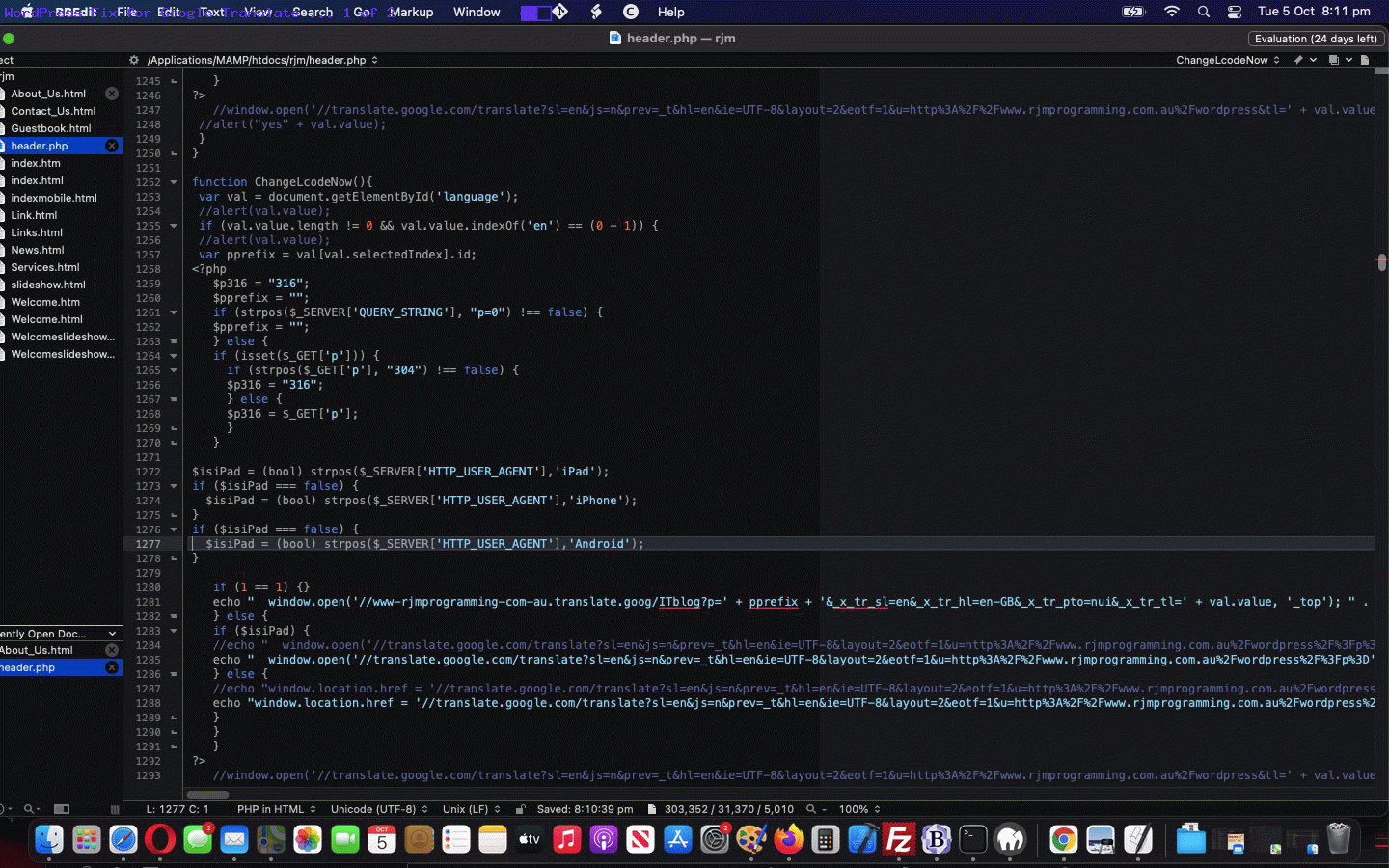We really like the way Google Translate can language translate whole webpages for URLs of choice, sometimes. We use it here at this blog, but sometime into the past … we cannot recall (sorrrrrryyyyyyyyy!) … the arrangements of use of this great functionality changed, and today we want to go over what we did for this blog to fix some of this interfacing.
It was in good ol’ WordPress TwentyTen theme’s header.php we made the change to facilitate this “reconnection” to this great functionality …
<?php
function ChangeLcodeNow(){
var val = document.getElementById('language');
//alert(val.value);
if (val.value.length != 0 && val.value.indexOf('en') == (0 - 1)) {
//alert(val.value);
var pprefix = val[val.selectedIndex].id;
<?php
$p316 = "316";
$pprefix = "";
if (strpos($_SERVER['QUERY_STRING'], "p=0") !== false) {
$pprefix = "";
} else {
if (isset($_GET['p'])) {
if (strpos($_GET['p'], "304") !== false) {
$p316 = "316";
} else {
$p316 = $_GET['p'];
}
}
$isiPad = (bool) strpos($_SERVER['HTTP_USER_AGENT'],'iPad');
if ($isiPad === false) {
$isiPad = (bool) strpos($_SERVER['HTTP_USER_AGENT'],'iPhone');
}
if ($isiPad === false) {
$isiPad = (bool) strpos($_SERVER['HTTP_USER_AGENT'],'Android');
}
if (1 == 1) { // _x_tr_sl=en&_x_tr_tl=de&_x_tr_hl=en-GB&_x_tr_pto=nui
echo " window.open('//www-rjmprogramming-com-au.translate.goog/ITblog?p=' + pprefix + '&_x_tr_sl=en&_x_tr_hl=en-GB&_x_tr_pto=nui&_x_tr_tl=' + val.value, '_top'); " . "\n";
} else {
if ($isiPad) {
//echo " window.open('//translate.google.com/translate?sl=en&js=n&prev=_t&hl=en&ie=UTF-8&layout=2&eotf=1&u=http%3A%2F%2Fwww.rjmprogramming.com.au%2Fwordpress%2F%3Fp%3D' + pprefix + '".$p316."&tl=' + val.value, '_top'); " . "\n";
echo " window.open('//translate.google.com/translate?sl=en&js=n&prev=_t&hl=en&ie=UTF-8&layout=2&eotf=1&u=http%3A%2F%2Fwww.rjmprogramming.com.au%2Fwordpress%2F%3Fp%3D' + pprefix + '".$p316."&tl=' + val.value, '_top'); " . "\n";
} else {
//echo "window.location.href = '//translate.google.com/translate?sl=en&js=n&prev=_t&hl=en&ie=UTF-8&layout=2&eotf=1&u=http%3A%2F%2Fwww.rjmprogramming.com.au%2Fwordpress%2F%3Fp%3D' + pprefix + '".$p316."&tl=' + val.value; " . "\n";
echo "window.location.href = '//translate.google.com/translate?sl=en&js=n&prev=_t&hl=en&ie=UTF-8&layout=2&eotf=1&u=http%3A%2F%2Fwww.rjmprogramming.com.au%2Fwordpress%2F%3Fp%3D' + pprefix + '".$p316."&tl=' + val.value; " . "\n";
}
}
}
?>
//window.open('//translate.google.com/translate?sl=en&js=n&prev=_t&hl=en&ie=UTF-8&layout=2&eotf=1&u=http%3A%2F%2Fwww.rjmprogramming.com.au%2Fwordpress&tl=' + val.value, '_blank');
//alert("yes" + val.value);
}
}
?>
Not too bruising!
If this was interesting you may be interested in this too.



